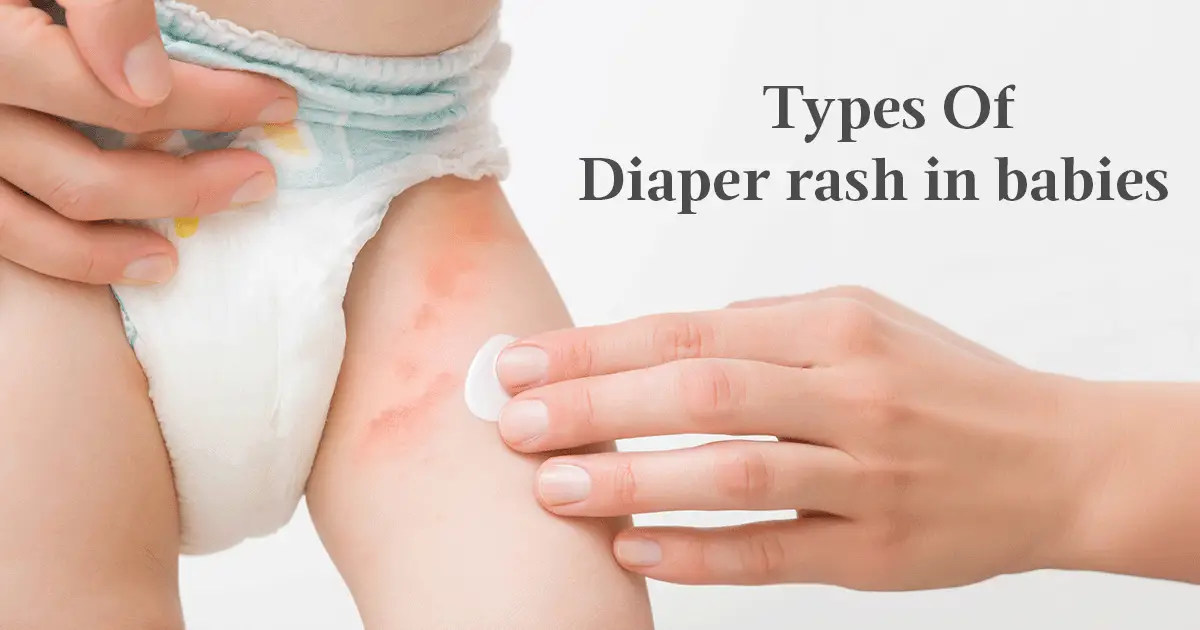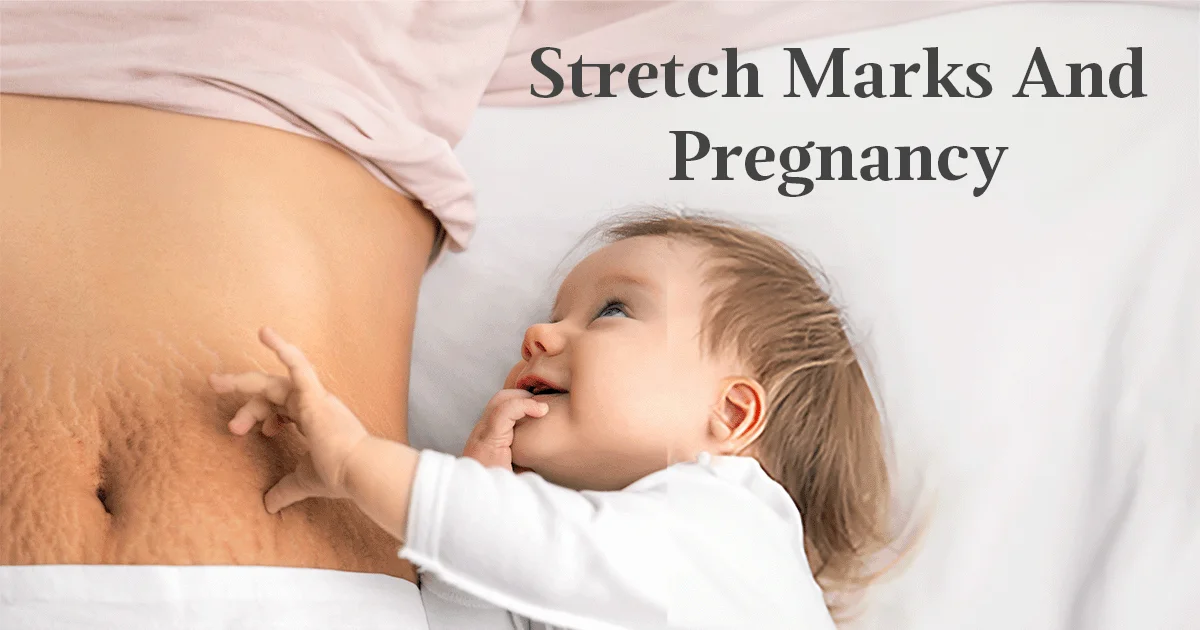
Imagine changing your baby's diaper and witnessing an irritated and itchy diaper skin area! How will you react? Chances are, you might panic or start looking for a solution immediately. You might talk to an experienced family member, or a friend or may call the paediatrician. Right?
There’s also a better way to handle this. By reading up about it. So, here we are with a blog that discusses common types of diaper rash, why it occurs, its symptoms/signs and ways to prevent it. Let's begin!
Exploring The Causes Of Diaper Rash
Nappy rash can be caused due to various reasons, like-
- Prolonged exposure to moisture 1
- Bacterial and yeast infection 2
- Change in diet leading to alteration in stool composition 1
- Tight-fitting diapers resulting in chafing or rubbing 1
- Using a new diaper brand, wet wipe or fabric softener 1
Now, let us understand the different types of diaper rash in babies.
Types Of Diaper Rash
1. Irritant Diaper Rash :
Cause - The most common type of rash, occurs due to long-time exposure to urine and stool. 2 Besides these irritants, sometimes the use of wet wipes or lotion in the diaper area can trigger an allergy. Thus leading to irritant diaper rash. 3
Symptoms - Appearance of pinkish-red bumps around the nappy area. This can get worse if a baby has diarrhoea. Even during teething, the extra saliva ingested passes through the gut and aggravates diaper rash. 3
Treatment - The first step is to reduce the frequency of diaper usage and implement diaper-free intervals for your baby. Make sure to clean the area gently. Use a highly absorbent diaper which helps in keeping the skin dry. 3 Also, apply a diaper rash cream whenever you change the diaper.
2. Candida Dermatitis
Cause - Yeast is a fungus that is naturally present in several parts of our body (mouth, skin, & intestines). Some beneficial bacteria exist on our skin and help balance the skin microbiome. When this yeast-bacteria balance is disrupted, the yeast overgrows and causes a nappy rash. 4
Symptoms - It is found in the skin folds of the baby’s genitalia, groin, buttocks and upper thigh. It is marked by cracked or extremely dry skin, itching, discomfort and mild pain. It can lead to dark red (or purple) skin areas and small fluid-filled blisters.4
Treatment - A paediatrician may recommend an effective and safe antifungal ointment, oral meds, or a cream for the baby's nappy rash. 4
3. Bacterial Diaper Rash
Cause - This type of diaper rash caused by bacteria is called ‘Impetigo’. Bacteria like staph or strep lead to diaper dermatitis or aggravate an existing diaper rash. 3 Bacterial infections are the second most common cause of diaper rash. 5
Symptoms - In a staph infection, you may see pus-filled pimples or yellow crusting on the skin.
With strep, you may notice bright, red-coloured skin focused around the anus (it can spread to the genitals also). 3
Treatment - Visit a physician/paediatrician for a consultation to get a detailed understanding of the right treatment and preventative measures. 3
4. Allergic Reactions
Cause - As the name implies, this kind of nappy rash is brought on by an allergy or irritant. We use different baby products for our little ones. However, despite choosing known and popular brands, the baby can end up with an allergic reaction. An infant’s sensitive skin doesn’t easily adhere to chemical-laden skincare products, leading to allergies.3
Symptoms - Any allergy including a rash that appears whenever you apply a particular product is a clue to allergic diaper rash. 3
Treatment - The best way to treat this type of diaper rash is to switch the brand/product which you suspect is causing it. 3
Other Skin Conditions That May Mimic Diaper Rash
Not all rashes in the diaper area are caused by typical diaper rash. Some skin conditions may look similar, making it difficult to determine the exact cause. Here are a few conditions that may be mistaken for diaper rash 6 :
- Birthmarks, hemangiomas, or tumors – These natural skin variations can sometimes appear as red or inflamed areas. 7
- Inflammatory conditions (e.g., lichen sclerosus, Crohn’s disease) – Certain inflammatory disorders can cause persistent skin irritation in the diaper region. 8
- Infestations (e.g., scabies, pinworms) – Parasitic infections can lead to itching and redness, often mistaken for a standard rash. 9
- Genetic skin disorders (e.g., hereditary bullous diseases) – Some inherited conditions cause blistering and inflammation in sensitive areas. 10
In addition to these, other common skin conditions can also resemble diaper rash 6:
- Heat Rash – Tiny red bumps from trapped sweat, especially in skin folds. You can treat it by keeping skin cool and letting it breathe. It is best to avoid applying thick creams over it. 11
- Seborrheic Dermatitis – Red, oily, or yellow patches on the diaper area, scalp, face, or neck. It usually clears up by 6-12 months with topical treatment.12
- Eczema – Dry, itchy skin that may affect the diaper area. Use fragrance-free products, mild moisturisers, and keep skin cool. In some cases it may need medicated ointments. It often improves by age 3-5. 13
- Psoriasis – As it looks like diaper rash or yeast infection it can sometimes be misdiagnosed. Similar to eczema, managed with gentle skincare and prescription ointments if needed. 14
- Impetigo – Contagious sores that ooze, often around the mouth, nose, hands, feet, or diaper area. Needs antibiotics; spreads until treated for 24 hours.15
If a rash in the diaper area persists despite standard treatments, it may be time to consult a doctor to rule out other potential causes.
Managing and Preventing Diaper Rashes
To effectively manage and reduce the risk of diaper rashes, consider these preventive and treatment measures:
- Frequent diaper changes – Keeping the diaper area dry and clean is essential in preventing irritation.
- Proper diaper fit – Ensure the diaper is snug but not too tight to avoid chafing.
- Thorough drying – Gently pat the skin dry before applying a new diaper or any protective ointment.
- Barrier creams – Use zinc oxide or petroleum-based creams to protect the skin from moisture.
- Fragrance-free products – Opt for unscented diapers, wipes, and creams to minimize irritation.
- Gentle cleaning methods – For severe rashes, consider using a squirt bottle instead of wipes to cleanse the area without rubbing.
- Diaper-free time – Allowing the baby to go without a diaper for short periods can help the skin heal and breathe.
- Avoid baby powder – Powders, especially containing talc, can irritate the skin and should be avoided.
- Encouraging potty training – If the child is old enough, transitioning to underwear can help minimize prolonged exposure to moisture.
Most diaper rashes resolve with proper care. However, if symptoms persist or worsen, seeking medical advice can help identify the best course of action.
The Final Note
After reading the blog, we can say, “A rash-free baby is a happy baby”? So far, we have discussed the four most common types of diaper rash among infants and babies. However, many skin conditions can start as or mimic diaper rash like seborrheic dermatitis, overproduction of skin oil, and paediatric psoriasis. The use of the right skin care product plays a key role in ensuring that the baby remains rash and allergy-free.
One such product worth giving a shot is AeroVeda’s Diaper Rash Cream. At Areoveda, we believe in providing safe and effective skincare products for newborns and their mothers. Dear mamas, feel free to visit our website and check the entire range of products for your little kiddos and yourself. Till then, take care and stay pampered!
|
Related Tip: Diaper rashes are common in infants. Here’s a helpful guide on choosing the best diaper rash cream. |
FAQs
How To Treat A Diaper Rash Fastly?
Use a diaper rash cream with a high percentage of zinc oxide. It forms a protective skin barrier from moisture and does not let the existing diaper rash get worse.
Can I Use Talcum Powder On My Baby’s Diaper Rash?
No, don’t use talcum powder to treat a diaper rash. Use a clean towel to pat the skin dry. Avoid scrubbing the baby’s buttocks.
My Baby Has A Diaper Rash. Is It Important To Bathe Him Daily?
Yes. It is important to bathe your baby daily. Use a mild baby wash and do not use soap. Use lukewarm water to soak the baby. Maintain proper hygiene of the diaper area.
Can I Use Wipes To Clean The Baby’s Diaper Area?
Use wipes that don't have soap, essential oils, fragrances, or harsh detergents as they may irritate the baby's skin.







.webp)


.webp)
